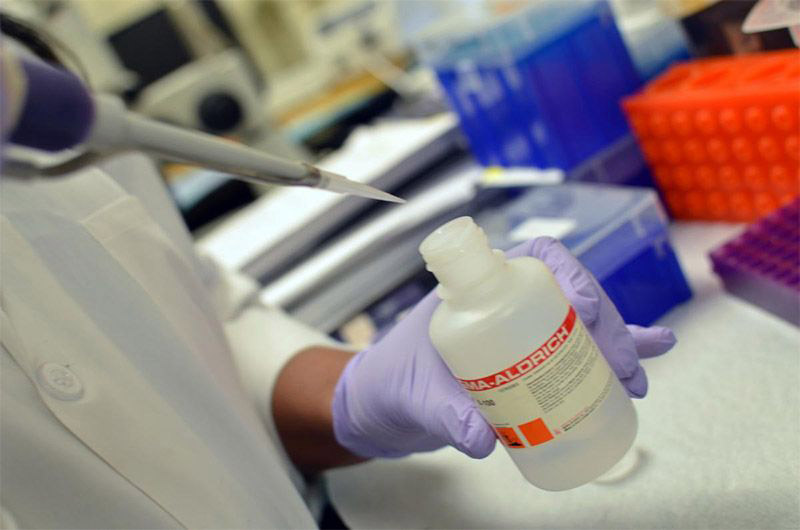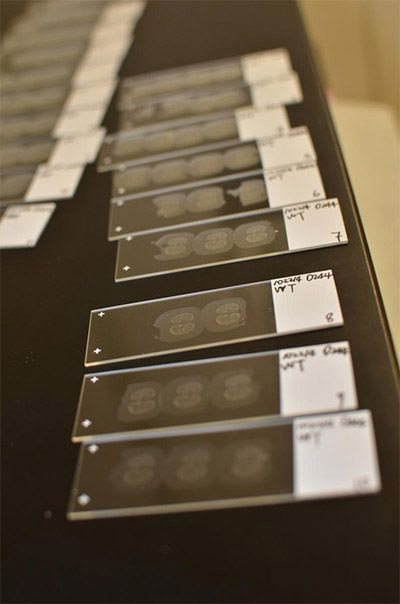
In the past 4 years, my laboratory has been funded from the National Institutes of Health and American Heart Association. Congenital Anomalies of the Kidney and Urinary Tract (CAKUT) are a major cause of morbidity in children, constituting approximately 20~30% of all anomalies identified in the prenatal period. CAKUT plays a causative role in 30~50% of cases of end stage renal disease (ESRD) in children, and predisposes to the development of hypertension and other renal-cardiovascular diseases in patients that survive to adolescence and adulthood. Read More
Therefore, CAKUT poses a significant economic burden on health care systems related to the patients' lifelong costly therapeutic needs. The long-term goal of our research program is to uncover the epigenetic mechanisms, especially histone acetylation and deacetylation, responsible for CAKUT. Our study will provide new insights into the epigenetics of kidney development and will open new avenues to novel strategies for the prevention and treatment of CAKUT and its associated renal-cardiovascular diseases, through pharmaceutical agents that target epigenetic modifiers. Such epigenetic drugs are already in clinical use or under investigation for the treatment of cancer as well as other. Ongoing projects in the lab are:
- The regulation of renal development by histone deacetylases. We are interested in the histone acetylation mechanisms involved in the regulation of nephron progenitor self-renewal and differentiation. Histone deacetylases (HDACs) are important epigenetic regulators that remove acetyl groups from histones as well as non-histone proteins. In addition to the regulation of chromatin structure and transcription, HDACs have been found to also play very important roles in many diverse cellular processes. We are employing genetic, biochemical, cell biological, and molecular biological approaches to address kidney development issues in mouse model systems. Our focus are on Hdac1, Hdac2, and Hdac3.
- Developmental programming by histone deacetylase during kidney formation. The early nutrition of the fetus has a profound effect on many aspects of heath and one important example of this phenomenon is intrauterine growth restriction (IUGR). IUGR is a leading health problem worldwide. Long-term consequences of IUGR include increased risk of many diseases, such as metabolic syndrome, cardiovascular disease, systolic hypertension, obesity, insulin resistance, and diabetes type II. There are no effective therapies to reverse IUGR. The precise mechanisms by which IUGR leads to the diseases are poorly understood. A mouse model of IUGR was developed in our lab. Our preliminary data suggest a functional link between IUGR and histone acetylation. Our work tests the hypothesis that under-nutrition during fetal life reprograms the development of the organs via aberrant activation of HDACs, which in turn predispose to chronic kidney disease, hypertension and accelerated aging.
Hongbing Liu
Assistant Professor, Department of Pediatrics
Phone: (504) 988-6244

1. Liao W., Liu H.B., Zhang Y., Jung J. H., Chen J., Su X, Kim Y.C., Flores E.R, Wang S., Czarny-Ratajczak M., Li W., Zeng S.X. and Lu H. CCDC3: A NEW p63 TARGET INVOLVED IN REGULATION OF LIVER LIPID METABOLISM, accepted for publication by Scientific Report.
2. Chao T, Zhou X, Cao B, Liao P, Liu H, Chen Y, Park HW, Zeng SX, Lu H. Pleckstrin homology domain-containing protein PHLDB3 supports cancer growth via a negative feedback loop involving p53. Nat Commun. 2016 Dec 23;7:13755. doi: 10.1038/ncomms13755.
3. Zhou X, Hao Q, Liao P, Luo S, Zhang M, Hu G, Liu H, Zhang Y, Cao B, Baddoo M, Flemington EK, Zeng SX, Lu H. Nerve growth factor receptor negates the tumor suppressor p53 as a feedback regulator. Elife. 2016 Jun 10; 5. pii: e15099.
4. Liu H, Chen CH, Ye W, Espinoza-Lewis RA, Hu X, Zhang Y, Chen Y. Phosphorylation of Shox2 is required for its function to control sinoatrial node formation. J Am Heart Assoc. 2014 May 20; 3(3):e000796.
5. Li X, Liu H, Gu S, Liu C, Sun C, Zheng Y, Chen Y. Replacing Shox2 with human SHOX leads to congenital disc degeneration of the temporomandibular joint in mice. Cell Tissue Res. 2014 Feb;355(2):345-54.
6. Liu H, Espinoza-Lewis RA, Chen C, Hu X, Zhang Y, Chen Y. The role of Shox2 in SAN development and function. Pediatr Cardiol. 2012 Aug;33(6):882-9
7. Wang Y, Liu C, Rohr J, Liu H, He F, Yu J, Sun C, Li L, Gu S, Chen Y. Tissue interaction is required for glenoid fossa development during temporomandibular joint formation. Dev Dyn. 2011 Nov;240(11):2466-73.
8. Espinoza-Lewis RA, Liu H, Sun C, Chen C, Jiao K, Chen Y. Ectopic expression of Nkx2.5 suppresses the formation of the sinoatrial node in mice. Dev Biol. 2011 Aug 15;356(2):359-69. (Co-first author)
9. Liu H, Chen CH, Espinoza-Lewis RA, Jiao Z, Sheu I, Hu X, Lin M, Zhang Y, Chen Y. Functional redundancy between human SHOX and mouse Shox2 genes in the regulation of sinoatrial node formation and pacemaking function. J Biol Chem. 2011 May 13;286(19):17029-38
10. Lin M, Li L, Liu C, Liu H, He F, Yan F, Zhang Y, Chen Y. Wnt5a regulates growth, patterning, and odontoblast differentiation of developing mouse tooth. Dev Dyn. 2011 Feb;240(2):432-40
11. Espinoza-Lewis RA, Yu L, He F, Liu H, Tang R, Shi J, Sun X, Martin JF, Wang D, Yang J, Chen Y. Shox2 is essential for the differentiation of cardiac pacemaker cells by repressing Nkx2-5. Dev Biol. 2009 Mar 15;327(2):376-85.
12. Liu Z, Li H, Hu X, Yu L, Liu H, Han R, Colella R, Mower GD, Chen Y, Qiu M. Control of precerebellar neuron development by Olig3 bHLH transcription factor. J Neurosci. 2008 Oct 1;28(40):10124-33
13. Yu L, Liu H, Yan M, Yang J, Long F, Muneoka K, Chen Y. Shox2 is required for chondrocyte proliferation and maturation in proximal limb skeleton. Dev Biol. 2007 Jun 15;306(2):549-59.
14. Wang S, He F, Xiong W, Gu S, Liu H, Zhang T, Yu X, Chen Y. Polycomblike-2-deficient mice exhibit normal left-right asymmetry. Dev Dyn. 2007 Mar;236(3):853-61
15. Chan PH, Chan KC, Liu H, Chung WH, Leung YC, Wong KY. Fluorescein-labeled beta-lactamase mutant for high-throughput screening of bacterial beta-lactamases against beta-lactam antibiotics. Anal Chem. 2005 Aug 15;77(16):5268-76
16. Alappat SR, Zhang Z, Suzuki K, Zhang X, Liu H, Jiang R, Yamada G, Chen Y. The cellularand molecular etiology of the cleft secondary palate in Fgf10 mutant mice. Dev Biol. 2005 Jan 1;277(1):102-13.
17. Chan PH, Liu H, Chen YW, Chan KC, Tsang CW, Leung YC, Wong KY. Rational design of a novel fluorescent biosensor for beta-lactam antibiotics from a class A beta-lactamase. J Am Chem Soc. 2004 Apr 7;126(13):4074-5.
18. Liu H, Chui KS, Chan CL, Tsang CW, Leung YC. An efficient heat-inducible Bacillus subtilis bacteriophage 105 expression and secretion system for the production of the Streptomyces clavuligerus beta-lactamase inhibitory protein (BLIP). J Biotechnol. 2004 Mar 18;108(3):207-17
19. Yan S, Liu H. Study on Relationship between the Molecular Folding and Activity of Alkaline Phosphatase from Sinonovaculaconstricta in the presence of Guanidine Hydrochloride. Chinese Journal of Biochemistry and Molecular Biology. 1994; 10(4):402-406.
20. Liu H, Yan S. The Influence of Organic Solvent on the Molecule Conformation and Catalytic Activity of the Alkaline Phosphatase from Sinonovaculaconstricta. Chinese Journal of Biochemistry and Molecular Biology. 1993; 9(4):500-506
Books and Chapters
21. Liu H, Chen Z, Yan S. Biophysics Studies of Radiation and Environment. China: China Press of Science and Technology; 1992. The Influence of Magnetic Field on the Conformation and Activity of Alkaline Phosphatase from Sinonovaculaconstricta; p.1-5.
